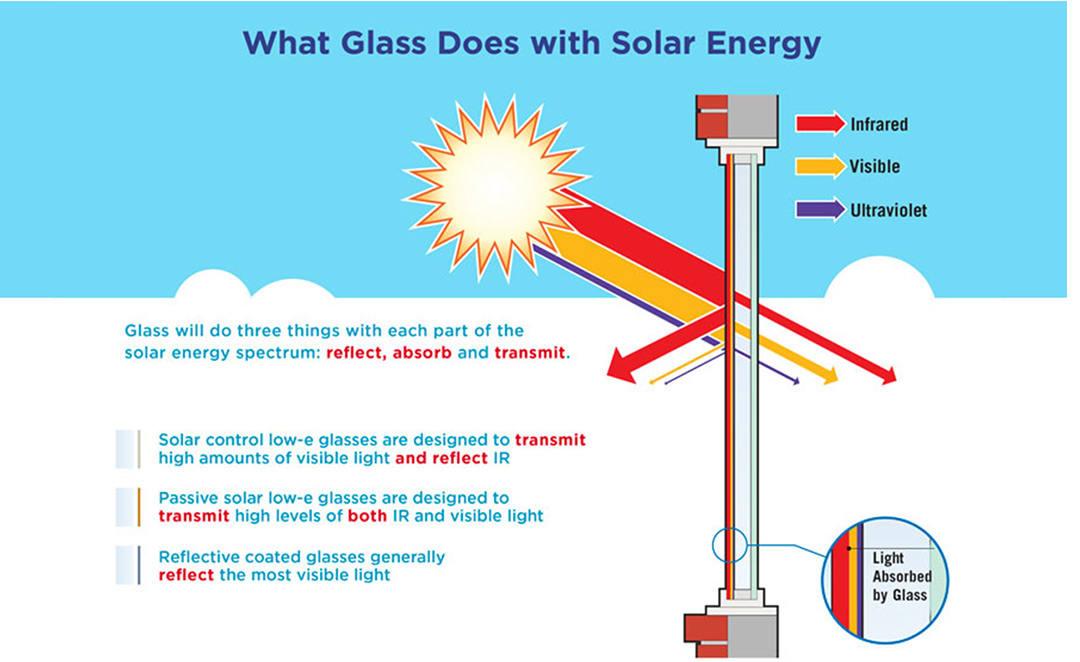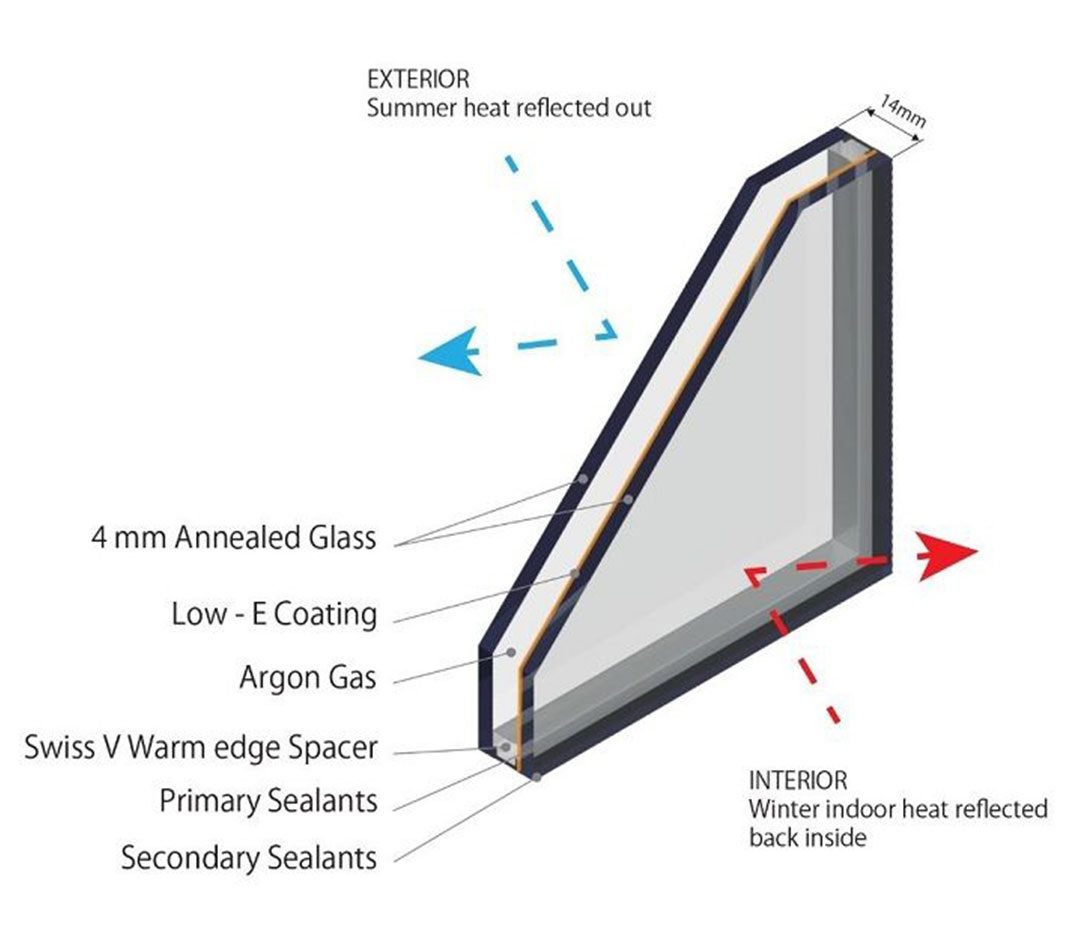Low Е glass - protection against heat in summertime
Low-E glass windows have a microscopically thin coating that is transparent and reflects heat. The Low-E coatings keep the temperature in your home consistent by reflecting the interior temperatures back inside. Glass reduces solar gain in winter as well as summer. For this reason, it is not recommended solar control glass in colder climates when the winter sun provides valuable natural heating. It is more beneficial to use low-e glass with double glazing to only reduce winter heat loss. The Low-E coating reflects heat back to its source so it helps your home stay cooler in the summer and warmer in the winter. It help protects against UV fading of any near by furniture
Solar heat gains in wintertime or protection against heat in summertime
During Winter
The insulation of the premises is not the main task of windows. Thanks to the development of new glass coatings, Кristian Neiko can provide glass with an even lower heat transfer coefficient Ug = 0.4 W / m2K. This value is close to the value of the wall heat transfer coefficient.
Anyone who wants to save on heating in the winter and not have to deal with overheating in the summer can benefit from an increase in the solar factor of up to 73%!
During Summer
In summer, the sun emits very large amounts of heat compared to winter. Heating is observed, mainly due to heat transfer through the windows of the windows. The degree of protection against heat in summer is expressed in the coefficient g. Its lower value determines the better effectiveness of overheating protection.
The structure of thermal insulation glass also includes structures that reduce the effect of overheating. Now anyone can improve their thermal comfort while reducing the operating costs of the installed mechanical air conditioning system. Let's not forget that the cost of cooling the premises is higher than the cost of heating.
Example
Insulation glass units can be one-chamber (2 glasses) or two-chamber (3 glasses), one glass is low-emission with an invisible layer of a combination of inert metals - the so-called "Low emission layer".
The space between the windows is filled with argon or krypton gas, which further reduces the heat transfer coefficient Ug. Gas leakage protection around the perimeter of the double glazing is provided by a warm two-stage spacer frame.



ADVANTAGES
- OPTIMAL TEMPERATURE IN ROOMS
- HIGH LEVEL OF LIGHT TRANSMISSION
- REDUCING THE COSTS OF HEATING
